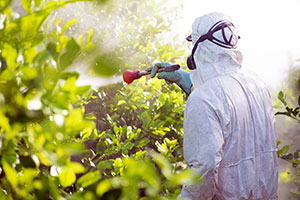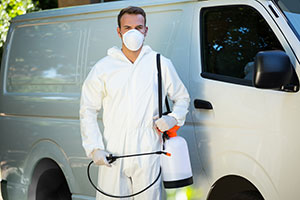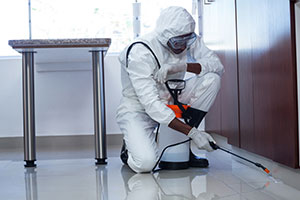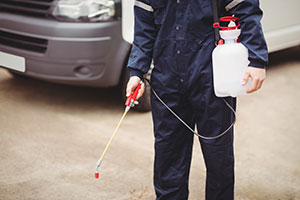
From Ants to Spiders: The Ultimate Guide to Non-Toxic Pest Barriers
Like a gardener in the green, you're constantly battling unwanted visitors. Yet, you're concerned about the toxic trail traditional pesticides leave.
You're not alone. In this guide, we'll explore non-toxic alternatives that are just as effective.
You'll learn how to create and maintain your own pest barriers, naturally and safely.
You don't have to choose between a pest-free home and a healthy environment.
Stand with us in this green revolution and let's make your home a pesticide-free zone.
Understanding Common Household Pests
Before diving into non-toxic pest barriers, it's crucial you understand the common household pests you're likely to encounter. In this circle of ours, we're all about embracing the world around us, but that doesn't mean we want every critter crawling in our cupboards. So let's arm ourselves with knowledge, shall we?
First up, we've got ants. Now, I know you're thinking, 'They're small, what's the big deal?' Well, remember, it's not just about size. Ants can cause significant damage to your home's structure, and nobody wants that.
Next, we've cockroaches. These resilient pests are a common sight, especially in warmer climates. They're not just unsightly; they can trigger allergies and spread disease. Let's agree, we don't need them in our homes.
Then, you've got your mice and rats. They're the sneakiest of the lot, creeping into your home unnoticed, gnawing on wires, and even spoiling your food.
Lastly, let's not forget spiders. Yes, they do eat other insects, but their bites can be harmful, and honestly, who wants to share their home with these eight-legged intruders?
Now, don't be disheartened. Remember, we're in this together, and knowledge is our first line of defense. By knowing what we're up against, we can create an environment that's inhospitable to pests, without resorting to harsh chemical solutions.
Together, we can keep our homes safe and our families healthier. So, are you ready to join the fight against these common household pests?
The Dangers of Traditional Pesticides
Despite being armed with knowledge about common household pests, you might be tempted to reach for traditional pesticides, but it's important to understand the risks associated with these chemical solutions. We're not here to scare you, but rather to help you make informed choices. After all, we're all in this together, facing the same pest problems and seeking safe solutions.
Traditional pesticides can pose serious health risks. They're often laden with toxins that are harmful not only to the pests but also to humans and pets. Long-term exposure can lead to a myriad of health issues including respiratory problems, skin irritations, and even more serious conditions like cancer. As a community, we ought to prioritize our health and well-being above all.
Moreover, these chemicals can wreak havoc on our eco-system. They don't discriminate between pests and beneficial insects like bees and butterflies. By using them, we're inadvertently hurting these helpful creatures that play a crucial role in our environment. We can't afford to upset this delicate balance.
Lastly, pesticides are just a temporary fix. They might kill the pests on sight, but they don't address the root cause of the infestation. So, you're likely to be dealing with the same problem over and over again, exposing yourself and your family to these harmful chemicals repeatedly.
You deserve better. We all do. It's high time to explore safer, non-toxic pest barriers. Together, let's shift to smarter, healthier alternatives that respect our health, our pets, and our planet. This isn't just about effective pest control. It's about belonging to a community that cares for its members and the environment we share.
Exploring Non-Toxic Alternatives
While you may feel overwhelmed by the potential dangers of traditional pesticides, it's important to remember that you've got plenty of non-toxic alternatives at your disposal. You're not alone in this journey, and together, we can create safer environments for ourselves and our loved ones.
One popular non-toxic choice is diatomaceous earth. It's a naturally occurring, soft, siliceous sedimentary rock that can be easily crumbled into a fine white powder. This powder can be sprinkled around your home's perimeter, acting as a physical barrier that pests find difficult to cross. It's harmless to humans and pets, but deadly to insects.
Another effective non-toxic alternative is essential oils. You'd be surprised at how potent these little bottles can be! Citrus, peppermint, eucalyptus, and tea tree oils are just a few that are known to repel a variety of pests. Simply mix a few drops with water in a spray bottle, and you've got yourself a homemade pest deterrent.
Or perhaps you're keen on introducing beneficial insects into your garden. Ladybugs, spiders, and praying mantises are all natural predators of common pests, and they'd love to make your garden their new home.
Lastly, don't underestimate the power of good old home cleanliness. Regularly sweeping, vacuuming, and decluttering can deter pests from setting up camp in your living space.
DIY Non-Toxic Pest Barriers
Now, let's look at five simple ways you can create your own non-toxic pest barriers at home. By going the DIY route, you're not only saving money, but also becoming an active participant in protecting your home and the environment.
1. Citrus Peels: Pests like ants and spiders detest citrus. You can use leftover peels from oranges, lemons, or grapefruits to create barriers. Just scatter them near doors, windows, or any other potential entry points.
2. Diatomaceous Earth: This non-toxic powder made from tiny fossilized aquatic organisms can be sprinkled around your home's perimeter. It's harmless to humans and pets, but lethal to insects.
3. Herb Planters: Many herbs, including mint, basil, and rosemary, are natural pest deterrents. Consider planting these around your home or keeping potted versions near entrances.
These methods aren't only effective but also give you the satisfaction of knowing you're contributing to a cleaner, healthier environment. Remember, every small step counts, and by adopting these non-toxic pest barriers, you're making a significant difference.
You're part of a community that values the health and safety of their homes, families, and planet. Embrace this role and share your experiences and tips with others. Together, we can create a world where we live in harmony with nature, rather than in conflict. So, don't hesitate, start creating your DIY non-toxic pest barriers today and join us in this mission.
Commercially Available Non-Toxic Products
If you're not into the DIY approach, there are numerous commercially available non-toxic products you can use to guard your home against pests. These products are formulated to be safe for you, your family, and the environment while effectively repelling unwanted intruders. You're part of a growing community of homeowners who prefer these eco-friendly alternatives over harsh chemicals.
Among the most popular non-toxic pest control products are essential oil-based sprays. Many pests detest the strong scents of oils like peppermint, citrus, and eucalyptus. Simply spray around your home's entry points and you'll create a barrier that bugs don't dare to cross. You're not only keeping pests out, you're also ensuring your home smells great!
Another product you can consider is diatomaceous earth. This fine powder, made from the fossilized remains of tiny aquatic organisms, is a potent pest deterrent. Sprinkle it around your home's perimeter and pests, such as ants and cockroaches, will avoid it like the plague. It's safe for pets and kids, but deadly to bugs.
There are also ultrasonic pest repellers that emit high-frequency sound waves. These annoying (to pests!) sounds are inaudible to humans and pets, but they're unbearable to rodents, spiders, and insects, who'll scurry away from your home in no time.
Preventing Pest Infestations Naturally
Beyond using commercially available products, there are several natural strategies you can employ to prevent pests from infesting your home in the first place. These methods aren't only eco-friendly, but they also create a safe and healthy environment for you and your family. It's all about being proactive, taking steps to ensure that your home isn't attractive to pests.
Here's a list of three natural pest prevention strategies:
1. Maintain a Clean Environment: This is a no-brainer. Pests are attracted to food and water sources. By keeping your home clean, especially in the kitchen and dining areas, you're making it less inviting for pests. Regularly take out the trash, clean up after meals and seal food containers.
2. Home Maintenance: Regularly check for cracks or holes in your home's foundation, walls, and windows. Pests can squeeze into the smallest spaces. Weatherstripping and caulking these gaps can go a long way in keeping pests out.
3. Natural Repellents: Certain plants, like lavender and mint, are known to deter pests. Planting these around your home can create a natural barrier. Similarly, essential oils derived from these plants can also be used indoors.
Maintaining Your Non-Toxic Pest Barriers
You've set up your non-toxic pest barriers, but remember, it's essential to maintain them regularly to ensure they remain effective. These barriers are your home's first line of defense against unwanted critters, but they're not a one-and-done solution. You've made an important step towards a safer home environment, so let's make sure your efforts pay off in the long run.
Firstly, check the barriers frequently. Your vigilance will keep the pests at bay. If you're using physical barriers like nets or copper tapes, ensure they're still in place and not damaged. For barriers that involve plants or herbs, make sure they're healthy and replenishing them as needed.
Secondly, keep your barriers clean. If you're using substances like diatomaceous earth, reapply after heavy rain, or if it seems to be thinning out. Remember, consistency is key in maintaining an effective barrier.
Lastly, rotate your barriers. Pests can become accustomed to certain deterrents over time. By changing up your methods every so often, you'll keep the pesky invaders guessing and prevent them from breaching your barriers.
You're part of a community of responsible homeowners who are dedicated to non-toxic solutions. By regularly maintaining your barriers, you're not only protecting your home but also contributing to a larger cause: a safer, healthier environment for everyone.
Ensure you stay committed to maintaining your non-toxic pest barriers. It's not just about keeping your home pest-free, it's about belonging to a community that values health, safety, and the environment. Your efforts are appreciated and beneficial to all.
Key Takeaways
- Traditional pesticides can pose serious health risks and harm beneficial insects.
- Non-toxic alternatives like diatomaceous earth and essential oils are effective and safe.
- DIY methods such as using citrus peels and planting herbs can create natural pest barriers.
- Regular maintenance of non-toxic pest barriers is essential for their long-term effectiveness.




